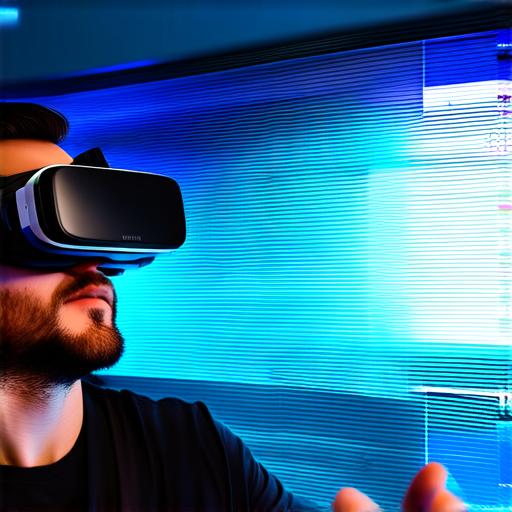
How to use a virtual reality headset
Introduction:
Virtual reality (VR) technology has been rapidly advancing in recent years, and many developers are now looking to create immersive experiences that can transport users into new worlds. However, using VR headsets can be a complex process that requires some technical knowledge.
1. Choose Your Headset:

There are many different VR headsets available on the market, each with its own unique features and capabilities. Some popular options include the Oculus Quest 2, HTC Vive Pro, and Sony PlayStation VR. Before you choose a headset, consider factors such as your budget, the type of content you’ll be creating, and the level of technical expertise you have.
2. Set Up Your Headset:
Once you’ve chosen your headset, it’s time to set it up. This process will vary depending on the specific model you’re using, but generally, it involves connecting the headset to your computer or console, adjusting the settings to your preferences, and installing any necessary software. Be sure to follow the manufacturer’s instructions carefully to avoid any issues during setup.
3. Choose Your Content:
There are many different types of VR content that you can create, from games and simulations to educational experiences and even therapy sessions. Before you start creating your own content, it’s a good idea to experiment with some existing VR experiences to get a sense of what works well in this medium. You can find plenty of free and paid VR content online to help you get started.
4. Create Your Content:
Once you have a solid understanding of the basics of using your VR headset and creating content, it’s time to start building your own experiences. This will involve designing the environment, creating interactive elements, and testing your creation to ensure that it works smoothly and is engaging for users. There are many tools and software options available to help you create VR content, including Unity, Unreal Engine, and A-Frame.
5. Optimize Your Content:
To ensure that your VR content runs smoothly and provides a great user experience, it’s important to optimize it for the specific headset you’re using. This may involve adjusting the resolution, frame rate, and other settings to match the capabilities of your headset. You should also test your content on different devices and platforms to ensure that it works well across all environments.
6. Publish Your Content:
Once your VR content is ready to go, it’s time to publish it for others to enjoy. There are many options for distributing VR content online, including platforms like Oculus Store, Steam, and Viveport. You can also host your content on your own website or server if you prefer. Just be sure to follow the guidelines and best practices for publishing VR content to ensure that it reaches as many people as possible.
7. Continuously Improve Your Content:
The world of VR is constantly evolving, with new technologies and tools being developed all the time. To stay ahead of the curve and create truly immersive experiences, it’s important to continuously improve your content based on user feedback and new developments in the field. This may involve experimenting with new techniques, incorporating new features, or even collaborating with other developers to create something entirely new.
Conclusion:
Using a VR headset can be a complex process, but with the right tools and knowledge, it’s possible to create truly immersive experiences that transport users into new worlds. By following these steps and continually improving your content based on user feedback and new developments in the field, you can create VR experiences that are both engaging and effective at achieving your goals.


